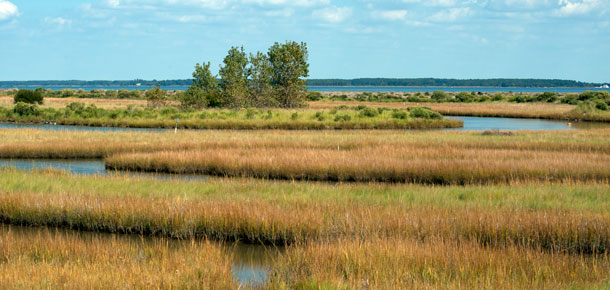Knauss legislative fellowships in Congress help build careers — and they're fun and educational. See our video and fact sheet for details.
How You Can Help

Improving the health of the Chesapeake Bay and its watershed may seem like a daunting task. But as big as the challenge is, there are many things that Marylanders can do to help — and that will make a difference. Some are very simple.
Here are 10 things that you and your community can do to help keep Maryland’s most important natural resource healthy for generations:
-
Pick up that litter: Keep trash out of the Bay.
-
Use less fertilizer — or none at all: Lawn fertilizers are a big contributor of nutrient pollution to the Bay. If you do fertilize, do so only in the fall, not the spring.
-
Install a rain garden or barrel: Collectors like these can be installed around your home and help to reduce the amount of storm water reaching local waterways.
-
Clean up after Fido: Scooping your pet’s poop is good for the Bay, since animal feces contains lots of nutrients and bacteria. And it’s good for your shoes, too.
-
Park it: Auto emissions contribute more than a third of the excess nitrogen that’s flushed into the Bay each year. So try to drive less and instead bike, walk, carpool, or take public transportation.
-
Turn off your lights: Power plant emissions are also a big source of nitrogen pollution to the Bay, so reducing your electricity use can help.
-
Watch that drain: Oils, antifreeze, paints, and prescription drugs can do harm when flushed. Contact your waste management service to see how you can best dispose of these items.
-
Check your septic: Leaky or failing septic systems leach nutrients and bacteria into rivers, streams, and groundwater. Have your system inspected once a year.
-
Contact your representatives: Tell your municipal, state, and federal representatives that you support policies that ensure a healthy and productive Chesapeake.
-
Volunteer: Contact a local watershed group or similar organization to see how you can help clean up your local stream or river. And get out and get dirty!
(This list was adapted from one published by the Maryland Department of the Environment.)
Going Further
Maryland Sea Grant offers these additional ideas and resources for those who want to help the Chesapeake.
-
Rain Gardens: Discover how to plan, fund, and install a rain garden project in your yard or community.
-
Oyster Gardening: Grow oysters off your own dock or community pier for use in restoration and education projects.
-
Watershed Stewards: Become trained to lead efforts in your community to improve the health of your local waterways. Check out the watershed stewards academy in your area.
Donate to Maryland Sea Grant
Please consider making a financial donation to Maryland Sea Grant to support our missions of research, education, and public outreach.






